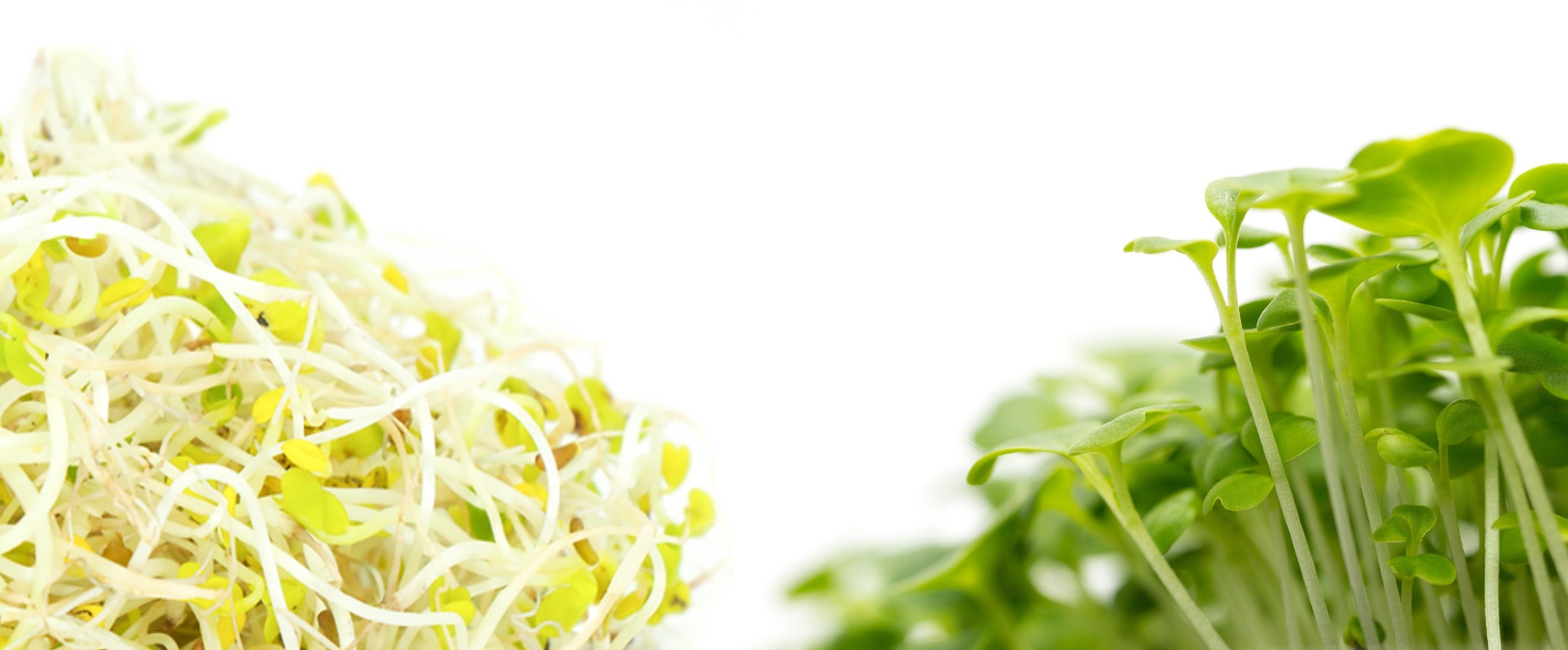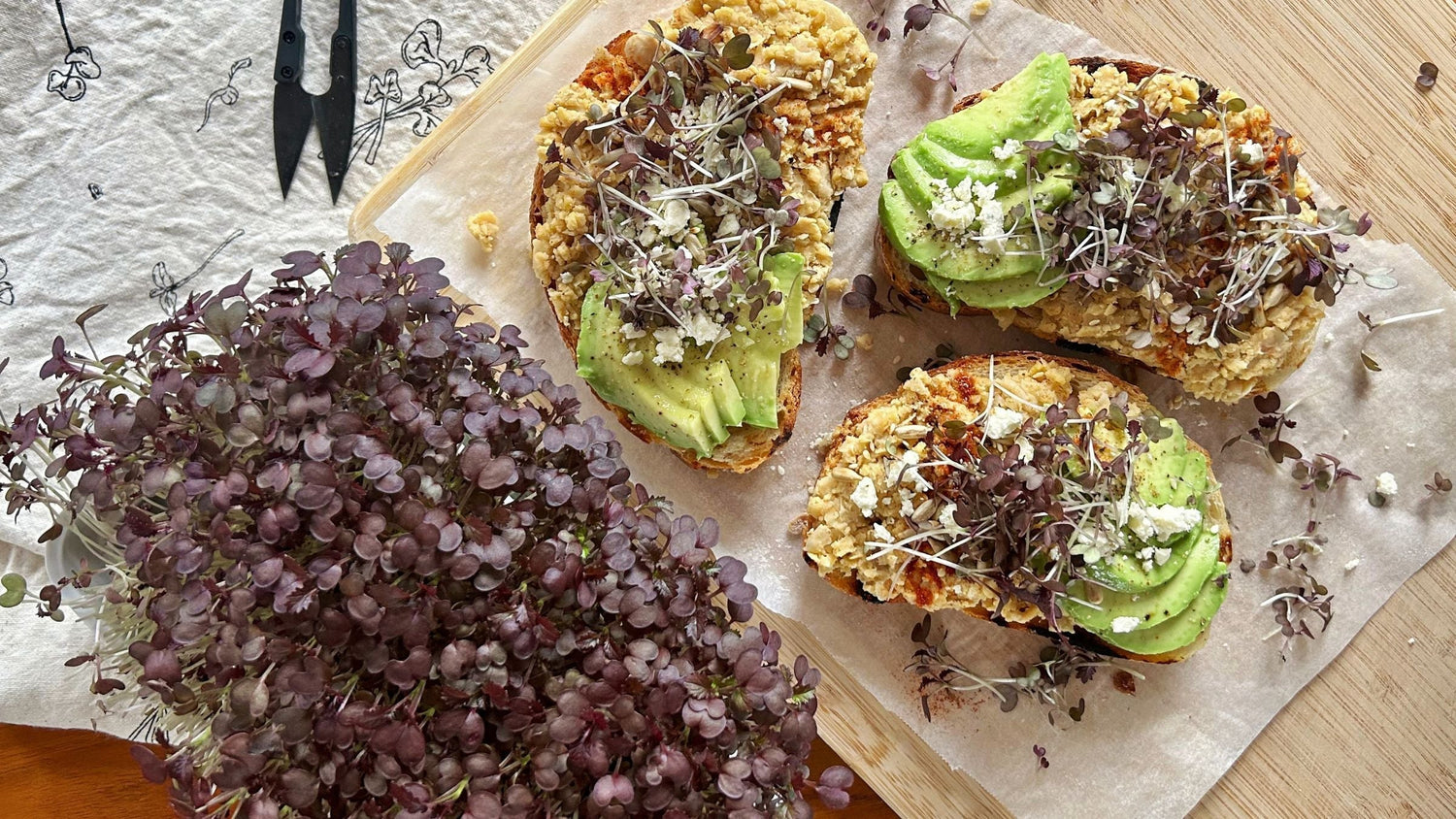It can be tricky to tell the difference between our favourite tiny veggies and to grow them properly at home. We've created a handy guide to help you choose the right one for your next meal and the best at-home methods to cultivate them.

The Life Cycle of a Vegetable
The life cycle of a veggie is marked by several universal stages. It begins with the humble seed. Botanically speaking, there is no difference between sprouting seeds and microgreen seeds; their names refers to the growing method. For both sprouts and microgreens- it's important that the seeds are Non-treated and Non-GMO (Genetically Modified) as they may contain nasty chemicals. All the seeds in our microgreen range meet those requirements.
In the first 3-5 days, The seeds burst open and start to develop their root system and first leaves as they prepare for photosynthesis; the process of drawing energy and nutrition from the sun. At this stage, the plant is called a sprout, and is on its way to developing a slightly stronger flavour. They have long pale roots that are crunchy and mild in taste due to its high water content.
After 7-14+ days, the first leaves start to open and begin to turn bright green, signalling their transition from sprout to microgreen. This point is the height of a plant's nutritional density, meaning the plant contains more vitamins, minerals and antioxidants by volume compared to any other stage in the growth cycle. The increased nutrition is required to sustain the plant on its pathway to maturity and infuses it at the microgreen stage with the strong hit of flavour that is foundational to its true taste.
21-50 days later, The first leaves are shed to make way for the plant's true leaves. They become known as baby greens. On the way to becoming fully grown, baby greens mellow out in flavour as they become less nutritionally concentrated by volume.
When a plant matures, it may flower depending on the species. This is when a plant is tough and may develop a bitterness signature to its full grown taste profile.
Growing Sprouts vs Growing Microgreens At Home
Because microgreens and sprouts represent different stages of a plant’s development, they require different environments in order to thrive. Sprouts grow more like a fungus, as we are providing them with high humidity in an enclosed and low-light space — such as the mason jar or a sprouter. This environment also favours the development of bacteria and mold which is why you should rinse the water at least 1-2 times a day.
On the flip side, microgreens grow more like a plant, absorbing nutrients directly from the soil or micropod seedmat, and light (via photosynthesis). At micropod we've developed a starter kit that ensures the best environment for growing microgreens, taking the guess work out of growing so you have more time to enjoy your home grown harvests.
How to eat Sprouts, Microgreens & Baby Greens
Sprouts can be eaten whole while microgreens and baby greens are eaten with the roots removed. Whether you're after a light garnish, sandwich filling or salad mix, sprouts, microgreens and baby greens all make for great options in their own unique ways. For texture and crunch, opt for sprouts. For flavour, choose microgreens or baby greens. To turbocharge your nutritional intake without the added volume, you can't beat microgreens for their remarkable nutrient to size ratio 💪🏻





